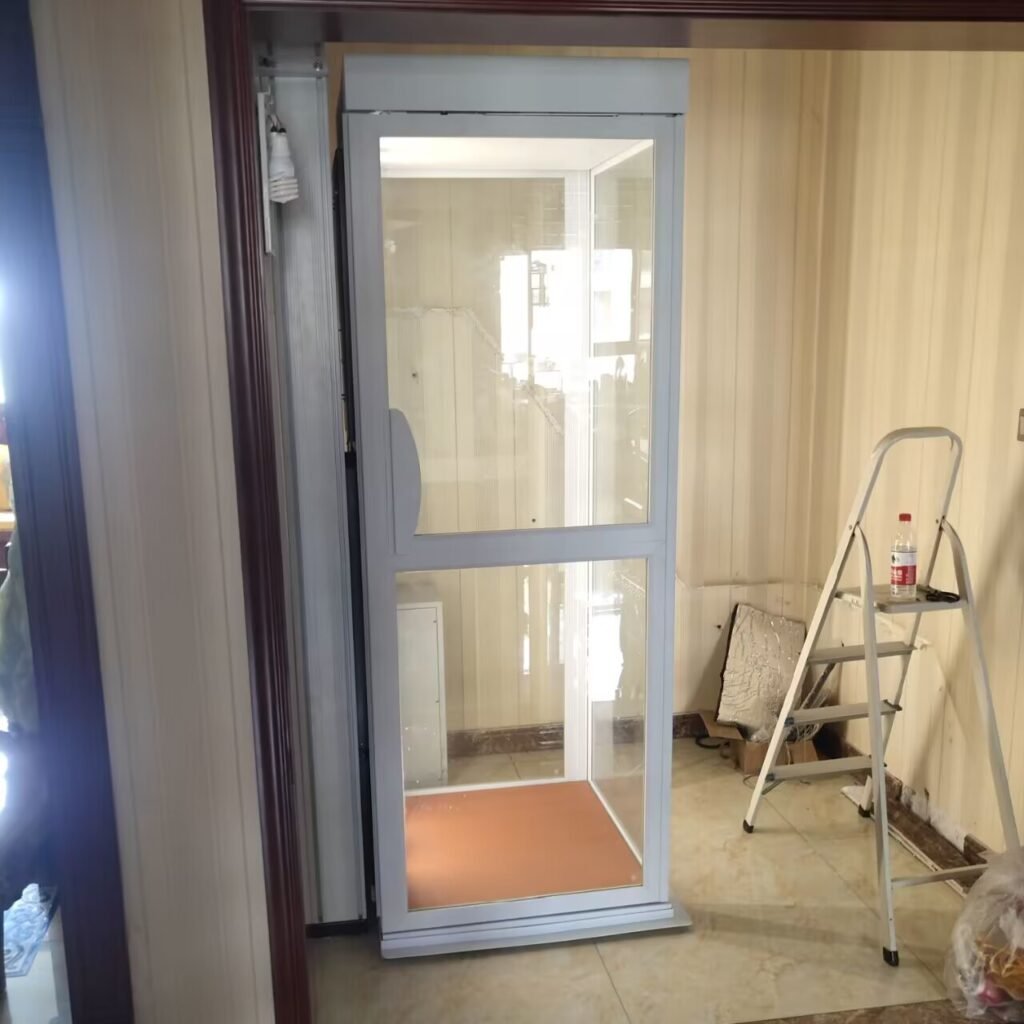Home hydraulic elevators, as a classic vertical mobility solution, maintain irreplaceable status in the global residential market. Despite advancements in permanent magnet and traction technologies, their unique strengths in low-rise homes, retrofits, and heavy-load scenarios continue to deliver value, serving as a critical choice for aging societies and heritage preservation.
Technological Evolution and Core Advantages
Rooted in 1960s engineering, home hydraulic elevators operate via hydraulic cylinders, offering three key advantages over traction systems:
Space Efficiency: Eliminating machine rooms and deep pits (minimum pit depth 150mm), increasing shaft utilization by 25%;
High Load Capacity: Up to 500kg capacity, ideal for moving large furniture;
Low Maintenance: Simplified mechanics reduce servicing to quarterly, with 20%-25% lower lifecycle costs.
Nationwide Lifts’ Freedom series (U.S.) employs closed-loop hydraulics and variable frequency drives, cutting energy use by 40% while operating below 50dB.

Global Market Dynamics and Emerging Opportunities
Regional diversification defines the home hydraulic elevator market:
Western Retrofits: 38% penetration in U.S. low-rise homes (2024), with seismic locks mandated in California;
Asia-Pacific Growth: China’s retrofit policies drove 18% YoY orders (2023), while India’s localized H-series costs ₹1.65 lakh (≈$2000);
Green Transition: Biodegradable fluids (e.g., Höglund BioFluid) and energy recovery systems reduce emissions by 30%, aligning with the EU Green Deal.

Smart Upgrades and Safety Innovations
Key breakthroughs counter competition:
IoT Monitoring: Real-time pressure/temperature tracking with 98% fault prediction accuracy;
Miniaturization: Thyssenkrupp’s MicroHyd series fits 1.2m×1.5m shafts;
Hybrid Systems: Schindler’s Hybrid Lift uses supercapacitors for 15+ emergency cycles.
Panasonic’s Age-Free series (Japan) adds health monitoring via floor sensors linked to medical platforms.

Challenges and Future Trends
Persistent hurdles include:
Energy Misconceptions: Modern models consume 1.5kW·h/day (equivalent to an AC unit);
Environmental Regulations: EU restrictions on mineral oils drive bio-fluid R&D;
Installation Complexity: Hydraulic line tuning adds 8-12 hours vs. traction elevators.
Future innovations target:
All-Electric Hydraulics: Servo-driven pumps for 90% efficiency and zero leakage by 2030;
AI Optimization: Machine learning adjusts pressure curves to cut 30% energy waste.
As technology aligns with market needs, home hydraulic elevators will continue to prove their indispensability in residential vertical mobility.





